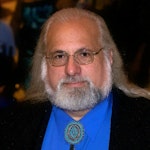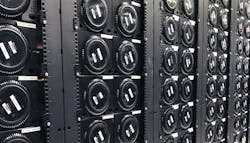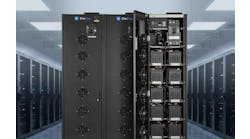The idea of a Mac as an enterprise device is not one that most IT departments consider. And with the exponential increase of work from home/remote work that started with the pandemic, Mac data center operator MacStadium found itself in the right place at the right time.
Founded in 2012 to offer a cloud for developers building applications for Apple devices, by 2019 MacStadium had already been through multiple iterations of Apple hardware and had continually improved their data center technology to provide everything from a Mac-centric cloud to where today they can offer Mac VDI, bare-metal remote Mac hardware, and even a custom Kubernetes orchestration solution specific to their platform.
When you look at MacStadium as a data center, you really need to understand its roots as a cloud provider. Many of the things that you would expect an enterprise grade data center to do are either extremely limited, or even impossible because of the nature of consumer grade Mac hardware. Common backup, failover, and other hardware level activities can’t be done, which limits what customers can do when compared to running Windows or Linux in the data center. The current version of MacOS means that you can’t clone a system partition, only data, changing the way you would recreate a failed system.
But with a move to virtualization, MacStadium can allow a customer to build a fully virtualized environment. MacStadium has created their own virtualization layer for Mac infrastructure which allows the use of Kubernetes on Apple hardware, the Orka platform. Working with virtual machines provides all the benefits of a more traditional data center environment.
And if you're wondering why they just don’t use a solution like VMware for virtualization, the answer is Apple’s latest silicon. With their move to the M1 and now M2 Apple processors, VMware, which supported Apple devices on Intel silicon, has decided not to continue with support for Apple ARM-based SoC CPU/GPU systems.
A Lot in Common with Traditional Data Centers
While this means they need to make specific allowances for running Apple hardware, MacStadium has focused on providing an environment that allows them to make Mac hardware into more of an enterprise resilient device. They run a spine/leaf network with significant resiliency and 80 Gb or more east/west traffic support, depending on which their four data centers the systems are located.
The entire network is run with Cisco Nexus switches, and the environment is optimized to run with Apple compute. Power is redundant and run directly to in-rack auto-transfer switches, limiting the impact of any power delivery issues, and you will find the cooling and backup power that you would expect in an enterprise data center. From a power perspective, the Apple hardware is energy efficient compared to a rack full of server blades.
The racks in the data center themselves are industry standard with custom shelves designed to hold the Mac hardware. Basically each generation and family of Mac devices has required their own rack designs to maximize capacity and efficiency. And with Apple stepping up the pace of new hardware introductions, MacStadium has invested in 3D modeling, allowing them to prototype new rack shelf designs, which has reduced development time for new racks for the latest hardware from six months to six weeks.
With a subset of customers who always want the latest and greatest hardware available on-demand, the ability to put it into service quickly is a competitive advantage. The broad range of hardware that Apple has available isn’t an issue.
"We are happy to rack and stack any of the Apple systems," said Paul Benati, COO of MacStadium. " “It's something that we offer, because we offer all of those platforms. We have racked them all at this point. We've even racked iMacs, amazingly enough.”
That ability and history highlights why customers chose to use MacStadium, rather than a Mac-as-a-service via AWS or another provider; MacStadium services come with the experience of the people who have been providing a Mac cloud and worked with all flavors of Mac hardware over the last decade. Customers who are adding Mac support or developing applications for the platform are able to treat their Mac deployment completely as a service offering, with everything from remote workers on dedicated bare metal to a fully virtualized macOS cloud with full orchestration. That expertise is a large part of what makes the MacStadium offering a compelling one.







